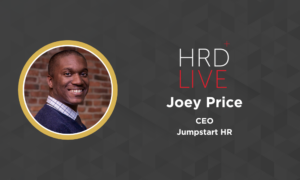How leaders can maintain strategic vision while disarming the bomb
- 6 Min Read
What has the Hudson River landing got to do with Coronavirus? In this article, Matthew Syed suggests some parallels and approaches for businesses leaders to consider as they explore ways to weather the current storm.
- Author: Matthew Syed
- Date published: Apr 28, 2020
- Categories

At 3.25 p.m. on 15 January 2009, US Airways Flight 1549 took off from runway 4 of New York’s LaGuardia Airport. Two minutes and eleven seconds later, the plane flew into a flock of Canada geese, knocking out the engines. Chesley Sullenberger, the pilot, would later talk of a deathly silence, the airplane losing thrust. He and his co-pilot Jeff Skiles were now 3000 feet above New York in a 70 tonne Airbus 320 bereft of power, with the lives of 153 passengers and crew in their hands.
A couple of years ago, I chatted at a Times newspaper event to Sullenberger and he recalled his initial sense of panic. His first thoughts were tactical: switching on ignition, starting auxiliary power in the tail, nudging the sidestick forward while sliding left to turn back towards La Guardia. This is a classic response to stress in a time of crisis. Perception narrows. One can’t help focussing on the instantaneous demands of staying airborne.
After the first few seconds, however, he had the sense to recognise that his focus had shrunk dramatically which, in turn, gave him the courage to take a step back and seek out the bigger picture. This is sometimes called situational awareness. It requires what we might call a “dual focus”: making sure the airplane is being handled while simultaneously making strategic judgements.
Teamwork was crucial. Skiles rifled through the quick reference handbook as Sullenberger assessed the big picture. He calculated that they wouldn’t make it to La Guardia or Teterboro, leaving the Hudson as their best hope. Even as they swooped, the division of responsibilities was seamless, Skiles calling out airspeeds and altitude as Sullenberger calibrated the sink rate.
“Imagine to have to disarm a bomb while also having to deal with menial chores and talk on the phone at the same time,” William Langewiesche, the author and pilot, writes in his gripping book Fly By Wire. “Sullenberger and Skiles disarmed a bomb on a three-minute fuse”.
Now, I’ve always been a bit of a sucker for aviation metaphors, but I think this incident has more than a little relevance right now. Companies have been impacted in strikingly different ways by the coronavirus crisis, an arbitrary pattern that most of us are still coming to terms with. Airlines and restaurants lost thrust altogether, while others have seen sharp declines. A lucky few (my wife tried to order an exercise bike on Tuesday and faced an eight week wait due to demand) are booming.
As in any crisis, perception has narrowed. Business leaders are eyeball to eyeball with rapidly changing tactical demands: how do we pay staff, how do we access government bailouts, and – while we are at it – how on earth am I going to home-school my kids? It is not just getting through the next week, but the next few hours. A crisis sucks you in, dominating bandwidth. And this is probably no bad thing for those companies now in a battle for their very existence.
But for companies hopeful of riding out this storm, however battered, a dual focus is likely to prove crucial. Retaining situational awareness. Thinking now about what the world will look like on the other side. This crisis has offered clues about a future that was already on the horizon but which is now coming towards us at ever greater speed. A future with more home-working, new travel patterns, virtual and mixed reality, and more. The ability to take a cool and rational look at this future, amid the eye of the storm, will prove to be a key competitive advantage.
The psychology is also instructive. Many CEO’s like winning. The evidence suggests that certain personality types make better decisions when the environment is benign, when their self-image is pristine, when people are smiling. Today, the environment favours those who can support the morale of anxious colleagues and who – like Sullenberger – value teamwork (“I could never have done it without Jeff,” he told me). Above all, the context favours leaders who can sustain a holistic perspective while handling minute-by-minute demands.
Indeed – taking a step back – I would suggest that these psychological attributes are imperative not just today, but in any fast-changing environment. Isn’t this the lesson that modern corporate history has handed us? Think of Blockbuster, a company that knew how to make tactical decisions, incremental improvements, what sports coaches might describe as marginal gains. Their business was about renting video and DVD’s and they performed well, iterating their offering, tweaking logos, trialling discounts. Their tactical discipline was impressive.
Yet it was also their undoing. The business model was obliterated by the rise of Netflix, a technological change that transformed the landscape of home entertainment. No amount of clever optimisation, no quantity of tactical steps, could have helped Blockbuster survive. When digital streaming arrived, Blockbuster found themselves climbing the wrong mountain.
You see the same story in reverse with Advanced Memory Systems, the company that first broke the 1000-bit memory-chip barrier in 1970, well ahead of Intel. This was a company that could see the big picture. They had scoped out the broader landscape, the disruptor of their age. Yet this was also their Achilles heel. They had the innovative product, but not the tactical rigour. While Intel was slower to the party, they were more disciplined when it came to manufacturing, delivery, scale and reliability. AMS was blown out of the water, joining a surprisingly long list of innovative companies – first movers – that lost in the marketplace.
The underlying lesson, I think, is that companies high on detail but who miss the big trends are as vulnerable as those that are innovative but can’t get the details right. This essential truth has particular significance at times of crisis. This is why leadership is about glimpsing the big picture and small picture simultaneously, people who can sustain strategic vision while disarming the bomb.
It is far from easy, I’ll grant you. But then who said leadership was easy?
For more information, please visit www.matthewsyed.co.uk









